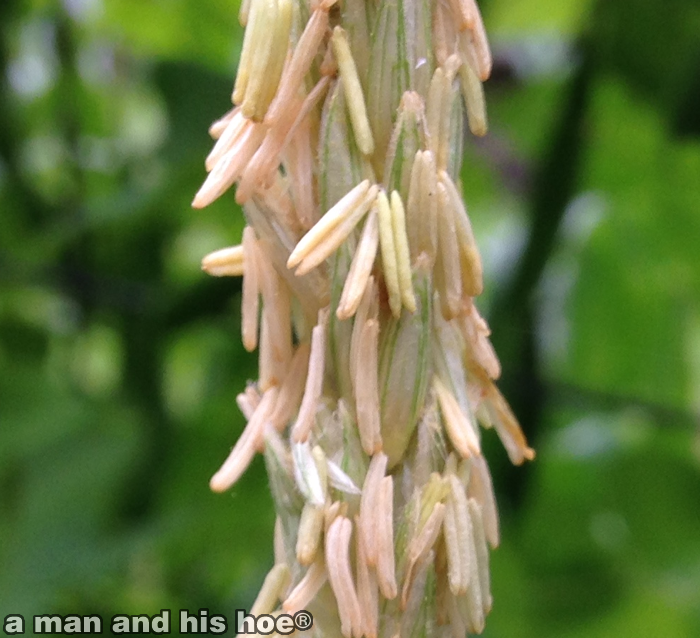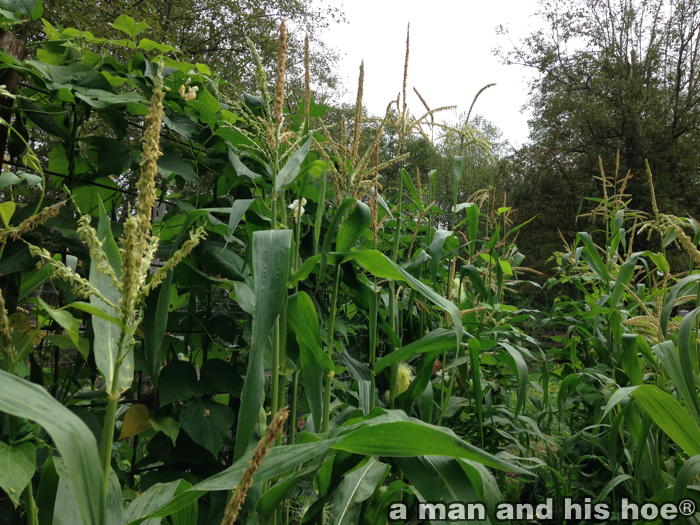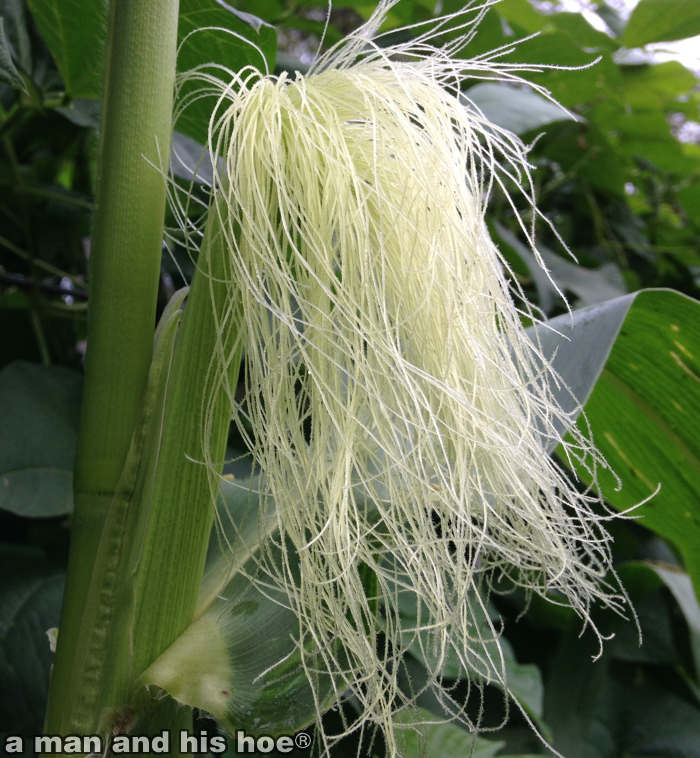Your cart is currently empty!
Month: September 2014
-
Hazel

Hazel is one of the more distinctive hens here at a man and his hoe®. Her character is as remarkable as her striking looks. She is a Turken chicken. She’s outgoing, friendly and cheerful. Seeing her come my way, always makes me smile.
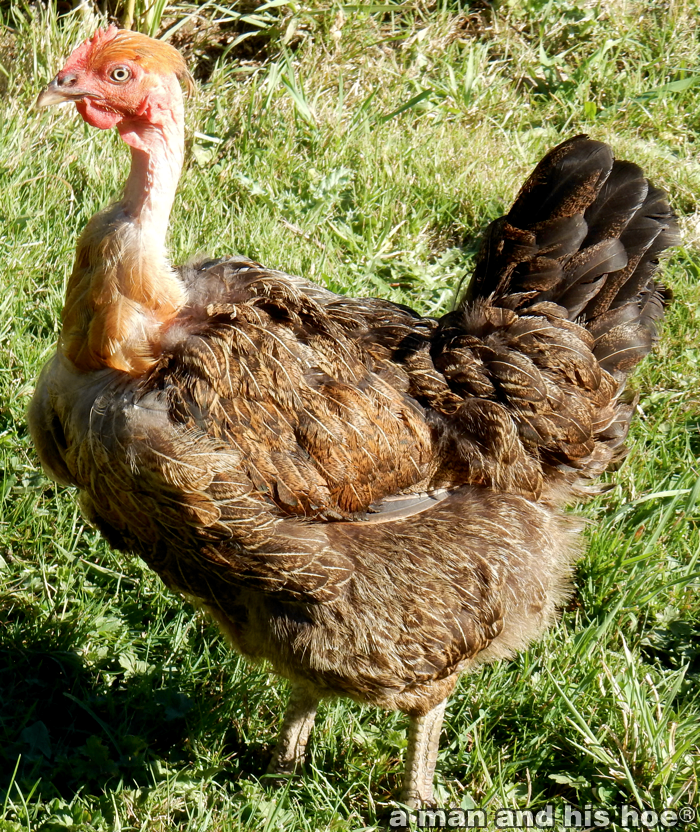
-
Grapes and Raking Leaves
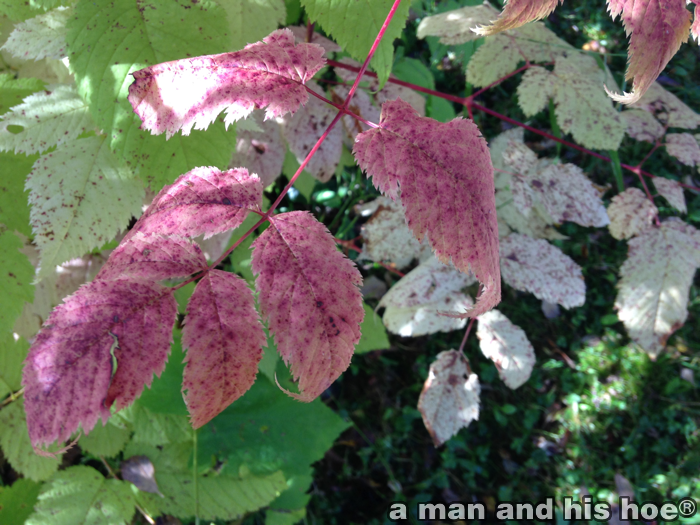

It’s the season for raking leaves. From now through October, piles and piles and piles of leaves to rake. Leaves to compost. Leaves to blanket the garlic beds. Leaves to run through.
It’s also the season for grapes, a chicken’s favorite food. If there is anything that will bring the chickens running from the other side of the pasture, it is grapes. They go nuts over grapes.
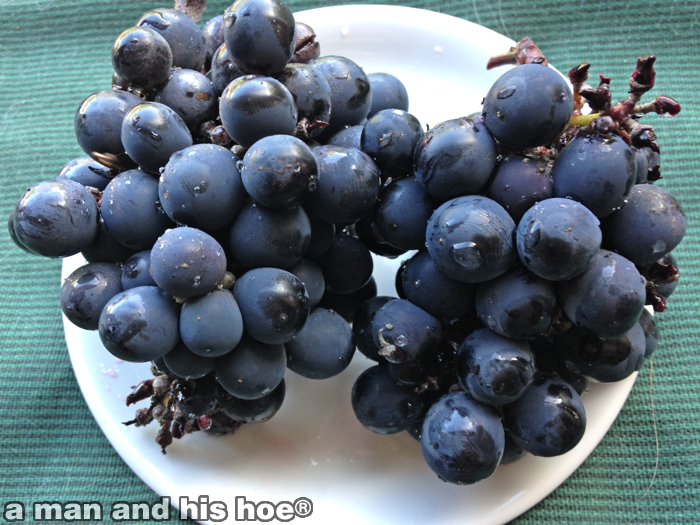

-
Safe with Mother
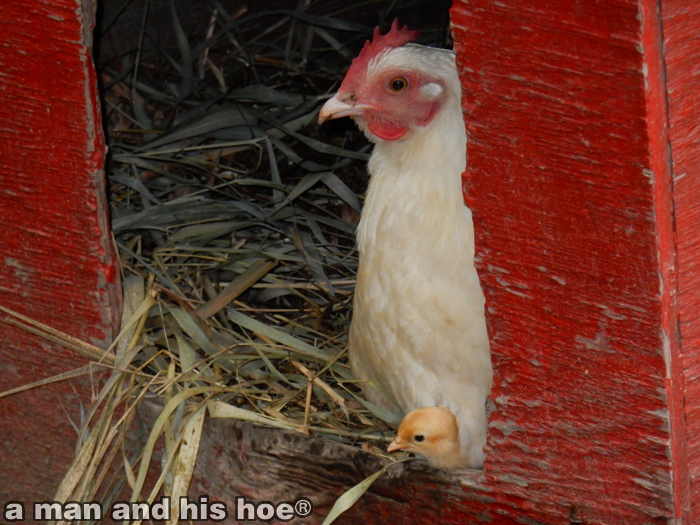
On a rainy day, the best place to be is indoors, looking outside from underneath a mother’s warm feathers.
Below, it’s time for a short, afternoon nap. You’d never guess Lucky has her five chicks tucked underneath her.
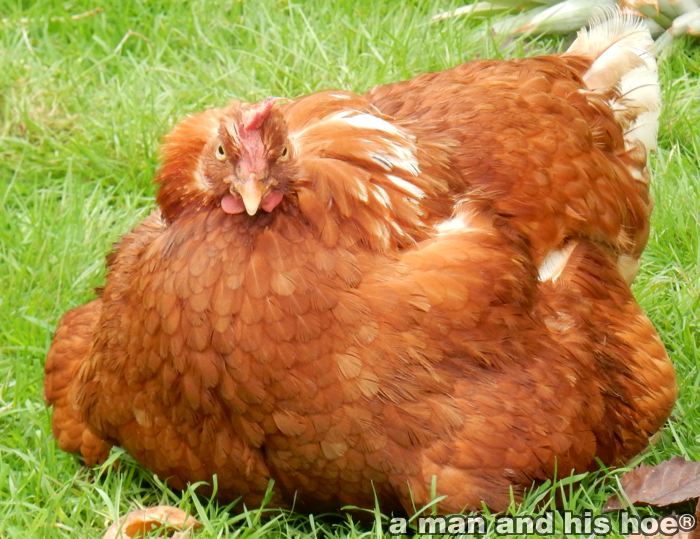
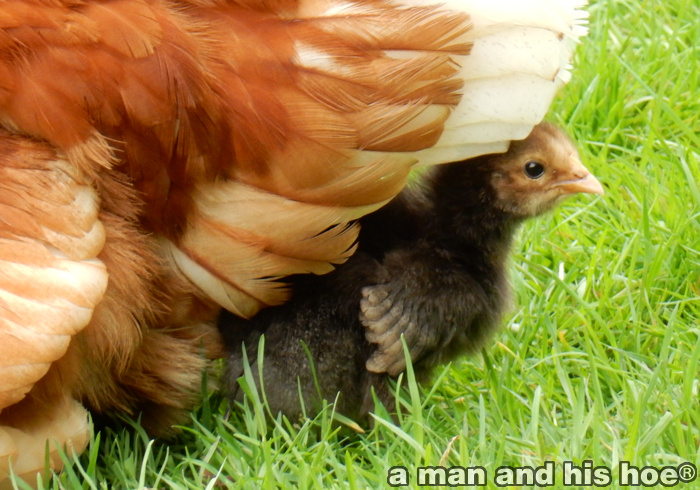
Out they come, one at a time.
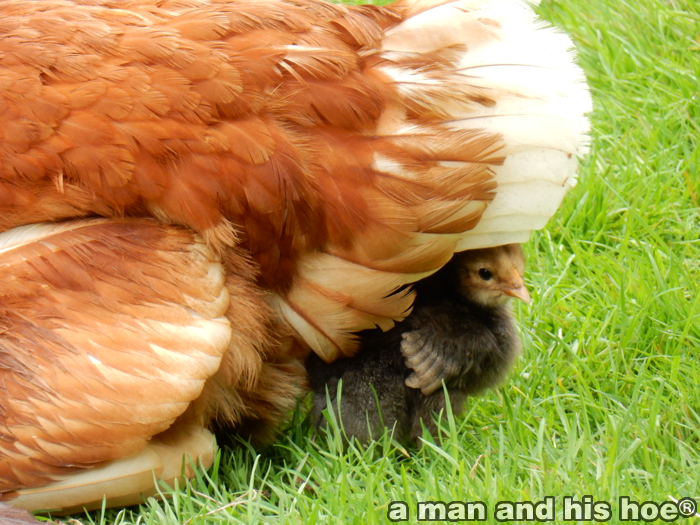
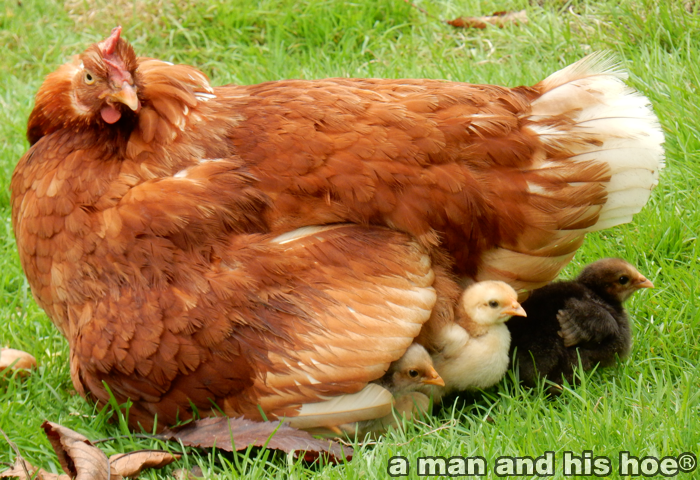
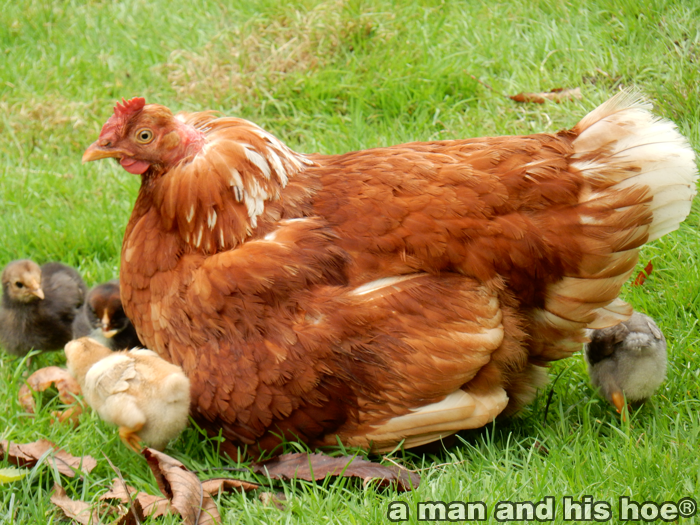
Nap time is over, and it’s back to exploring the world, having fun, and growing up.

-
Out of the Garden Today – September 23, 2014
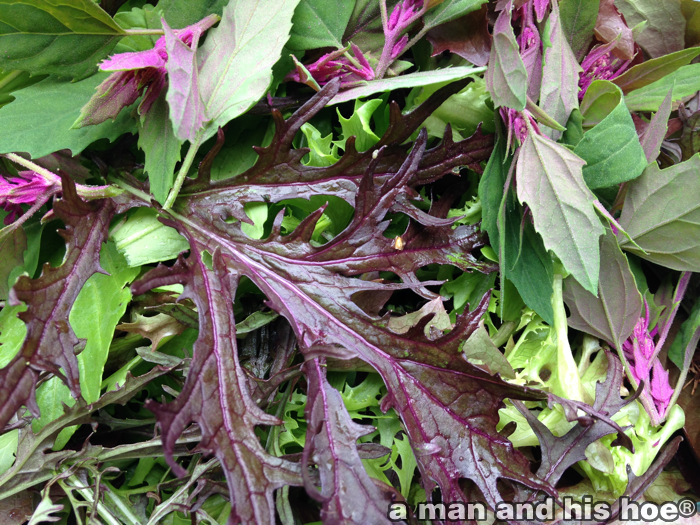
We had company for lunch today. How often do you get to visit someone and enjoy a salad made from salad greens that were just picked? It’s a pleasure to be able to serve such fresh food to our guests. I also made mashed potatoes from potatoes I dug up just before I boiled them.
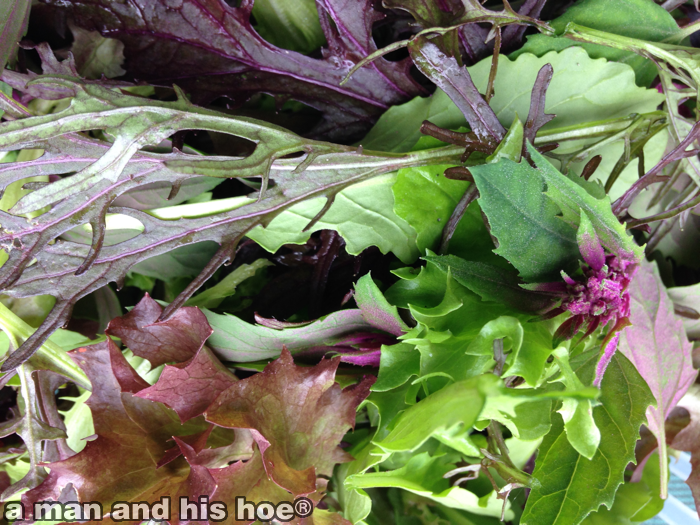
-
What Is That Sweet Scent?
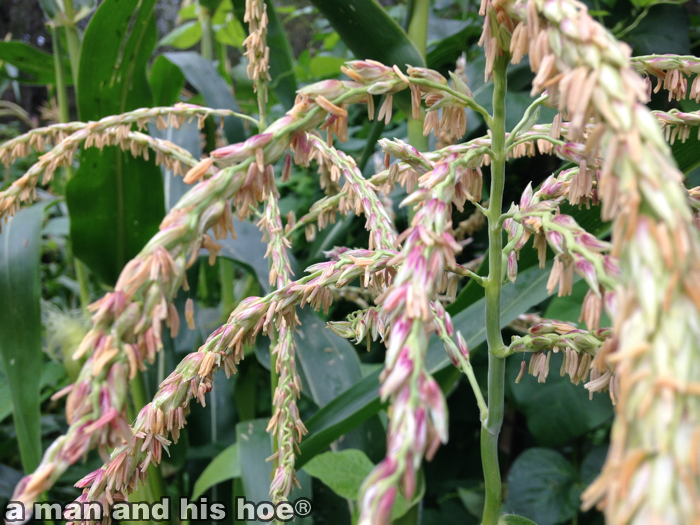
Recently, whenever I am out in the vegetable beds, the sweet scent of a mysterious flower floats through the air. The past few days I’ve wondered what is blooming. Today I found out. It is the popcorn I planted. The tassels of the popcorn have an enchanting, sweet fragrance. The fragrance is so sweet, I’m tempted to cut some tassels and put them in a vase.
